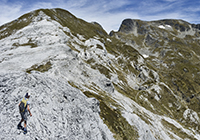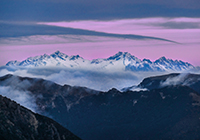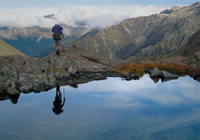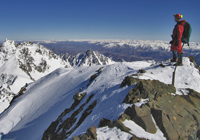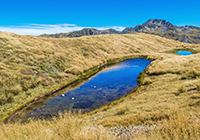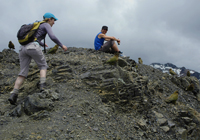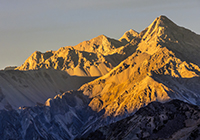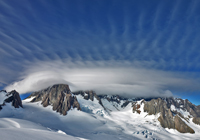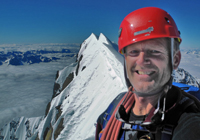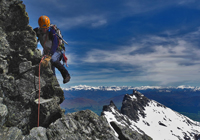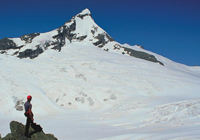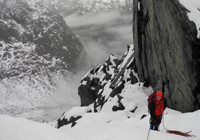See New Zealand – South Island
Quickly find specific New Zealand mountain images and information using the dropdown navigation above, or click an in-page thumb below. If you like using a Site Map that’s also an option.
New Zealand is an alpine lover’s paradise, offering many life times of climbing opportunities. Most have heard about Aoraki – the ‘Clouder Piercer’ and the country’s highest peak at 3,754m. But Aoraki/Mount Cook presides over some thirty other peaks over 3,000 metres.
All of New Zealand’s three thousanders lie on or very close to the main divide of the Southern Alps and, all but one, are clustered around Aoraki/Mount Cook. In this cluster, Mount Sefton (3,151m) is furthest south, towering over Mount Cook Village. Less than 80km to the north east, as the kea flies, Elie De Beaumont (3,109m) is the northern most three thousander, lying just west of the Tasman Saddle.
The only other three thousander is Mount Aspiring (3,033m), in Maori known as Tititea, ‘steep peak of glistening white’. Aspiring stands proud and aloof further south in its own national park in the Southern Lakes. The next tallest in Mount Aspiring National Park is Mount Earnslaw (2,830m). To the west of Earnslaw, the highest peak in Fiordland National Park is Mount Tutoko (2,723m).
At the other end of the Southern Alps are the mountains of the Arthurs Pass region. Then, lying still further north, are a lower cluster of mountains, the highest being Mount Franklin at 2,340 metres, in the Nelson Lakes National Park. While considerably lower, there are still seemingly endless climbing possibilities to be enjoyed here as well.
The tallest peak outside the main divide is Tapuae-o-Uenuku, ‘footprint of the rainbow’, in the Inland Kaikouras. Tappy stands at 2,885 metres, which is about the height of a twenty storey building taller than the highest North Island peak, Ruapehu, the ‘exploding pit’, at 2,797 metres.
I should not forget the lesser hills of New Zealand either, in the North Island ranges such as the Tararuas, with their high points virtually all under 1,700 metres (Mount Hikurangi in the Raukumara Range north of Gisborne, at 1,755 metres, is the highest non-volcanic peak in the North Island) still offer rugged terrain, exposed sections of ridge, at times brutal weather conditions and, in winter, some worthwhile opportunities to give the crampons and ice axe a good workout. For those living nearby, which is many of us, journeys into the likes of the Tararuas, Ruahines and Kawekas are more accessible and provide a great pathway into more serious climbing ventures.
Aside from height, other obvious differences between the southern and northern mountains are due to how they formed. In the south the peaks are jagged and densely clustered along the main divide, which is a highly visible manifestation of the tectonic fault line running beneath it. In the north all the biggest mountains are the result of volcanoes, looming out of the lowlands as more individual cones.

